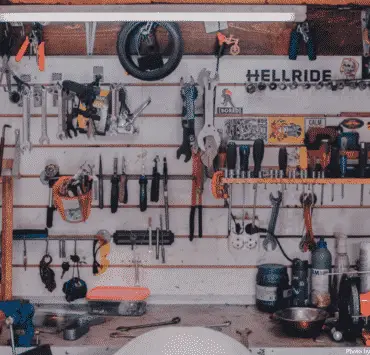Even before your front door greets you, if you’ve driven home, your garage door will welcome you into your home. Used daily, multiple times a day, a properly working garage door is needed for safety and function. In the inevitable time that you need a garage door replacement, here’s what you can expect.
[ez-toc]Garage Door Cable Replacement
The garage door cable is a safety piece. The cable stops broken springs from snapping off and causing an accident. While it’s essential to monitor the condition of garage door springs, a door cable gives extra safety insurance.
Garage door cables do wear down also. They can last up to 15 years, but you should do an annual check for any damage. Keep an eye out for rust and any signs of warping in the wires such as fraying, separating and breaking.
If you’re looking to do garage door cable replacement, here’s a quick overview of steps that you can expect to take.
Disengage The Garage Door
Pull the emergency release to disengage the garage door. This allows you to open and close the garage door manually.
Prepare Your Tools And Safety Equipment
Have your safety equipment and your tools laid out and ready to go. Keep in mind that safety equipment is the most important step for garage door replacement. It will help protect you from injuries from possible recoil from springs. And should you find yourself overwhelmed with the task, you can always call a professional to get the job done instead.
For garage door cable replacement, you’ll typically need the following:
- Loose fitting clothing and work boots. Don’t wear jewelry or anything that could get snagged while working.
- Garage door cable replacement
- Safety glasses
- Leather work gloves or any other work gloves with sturdy material that will protect your hands from wiring.
- Rags for cleaning up
- A ladder
- Vice grip
- Winding bars
- Wrenches
- Ratchet
- Sockets
Open The Garage Door
Now it’s time to get to work on the door. Open the door manually. Place your vice grips just below the bottom of the garage door roller on both sides. This will keep the door open so you can get to work on changing the cables.
Release The Spring Tension
Proceed to release the spring tension. From the center of the door, loosen the screws on the springs in ¼ increments. Next, insert BOTH winding bars. You need to place them together to prevent injury. Once the bars are in place, fully remove the tension on the garage door springs. Again, unwind the screws in ¼ increments until all the tension is gone.
Loosen The Screws On The Cable Drum
At the top left of the door, loosen the screws on the cable drum with a wrench. Remove the cable drum. Along the bottom of the door, remove the bottom lag screw from the jamb bracket using a ratchet and socket. Once the bottom lag screw is removed, remove the bottom bracket. Lastly remove the cable from the bracket.
Install The New Cable
Install the new cable onto the bottom bracket on one side of the garage door. Thread it upwards to the cable drum at the top of the door. Repeat the process on the other side of the garage door.
Set The Cable
Ensure that your garage door cable is properly set. You don’t want any misplacement or overlapping before you tighten the cable.
When you’re sure the cable is in place, wind it down onto the cable drum. Slide the cable drum towards the bearing plate. Turn the drum counterclockwise to tighten the cable. Repeat this on the other side.
Once done on both sides of the garage door, tighten the screws to set everything into place. Don’t over tighten the cable or the screws to avoid stripping them.
Increase The Spring Tension
Hold your new cable and use your vice grip to hold into place the rod that intersections and goes across the garage door. Repeat this on the other side. Once held into place, use winding bars to increase the tension. Again, at ¼ turns. Turn until the springs are tight but not too tight.
Re-Engage The Garage Door
Lastly, take off the locking pliers from the metal rod at the top of the door. You can now re-engage the door. Lift the door until you hear it double click into place. Finally, plug the opener back in.
Things To Keep In Mind
As with any repair job, don’t be surprised if any unexpected issues come up. So use the above points as a guideline to what you can expect when working on garage door cable replacement.
While it is a DIY job, it’s important to know your way around the parts of the garage door, your tools, and knowing how to troubleshoot any issues. This is for your safety during the process of garage door replacement. A functioning garage door is also a safety issue every time you use it. Before you go about doing things like garage door spring replacement, garage door roller replacement, garage door panel replacement and anything else of the sort, be sure you’re up for the task.
How Much Does Garage Door Replacement Cost?
If you find that garage door replacement is best left to a professional, here are costs you can expect. The national average for garage door replacement is $247. You can however spend anywhere between $149 to $350 depending on your garage door materials, added enhancements and labor costs.








